#is very similar to the dynamic of General Rokurota and Princess Yuki in 'Hidden Fortress'.
Text
What "The Hidden Fortress" (1958) tells us about the Jedi's status in the Prequels.
In 1999, George Lucas had this to say on BBC Omnibus: A Long Time Ago: The Story of "Star Wars" and then The Phantom Menace's director's commentary.
“I greatly admired Kurosawa, especially the film Hidden Fortress, which told a story from the point of view of two serfs, two slaves...

... peasants who tag along with this famous general and a princess-- y'know, royalty. And the whole story is told from their point of view. And I like that idea.
I like the idea of telling a story from the lowest person's point of view, uh, in the food chain, and that's how the story got to be told by Artoo and Threepio.”
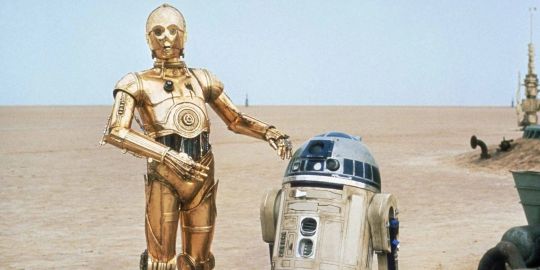
“[The Phantom Menace] is told primarily from the Jedi's point of view, but the story that's being told is essentially the story of Queen Amidala and her plight of having her planet blockaded. As in, say, Episode IV, where the story is told through the eyes of the droids, in this one, it's told through the eyes of the Jedi.”
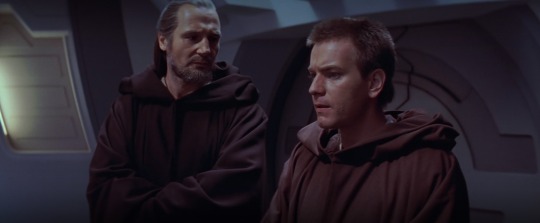
“But [from the moment we get to Coruscant, Anakin and Jar Jar] are standing on the sidelines. It's a little bit a riff on the very first film where the story is told through the point of view of the droids, who were sort of the lowliest characters.”

“And in [Phantom Menace], I'm doing it through - primarily - the two Jedi, but then the secondary characters are also carrying a lot of the weight when the Jedi aren't around.”
George Lucas draws a comparison between lowly characters like Hidden Fortress' peasants Matashichi and Tahei, the droids in A New Hope, as well as the Jedi in The Phantom Menace.
What do they all have in common? They are all the lowest-ranking characters in their respective films. Repeat: the movie frames the Jedi as almost at the bottom of the food chain.
Because of course they are. Functionally, they're just diplomats. They hold no political power whatsoever and barely have any authority .
What little authority the Jedi do have in TPM comes from the Queen's young age, which allows them to ease into a more advisory position, and Qui-Gon's rebellious streak. And even he's explicit about the fact that his mandate has limitations.

The only characters "below" them in status are Jar Jar, an exiled Gungan, and Anakin, who just yesterday was still a slave kid, Artoo the literal object and that's it!
Also the other Prequel films are consistent with this portrayal. Who do we see lower in status than the Jedi? Dexxter Jettster and the clones. Everyone else is pretty much above them.
Yes, the Jedi are part of the system, but they're not as high-ranking as you'd think. Yes, they have Force Powers, but that means squat when put against political power. So, like, to expect the Jedi to...
influence the decisions of the Senate,
wage a war against the Outer Rim to end slavery,
or blatantly refuse an order to join the war effort,
... is incredibly unreasonable.
They're not meant to be seen as "the elite, peering down upon the people from their ivory tower".
They're the servants! Servants of the Republic.
And they're seeing their higher-ups destroy what they should all stand for, but are unable to stop them.
Later on, with The Clone Wars, we are introduced to civilian characters and from their point of view, the Jedi are ultra powerful and are highly placed and "should do more but don't".
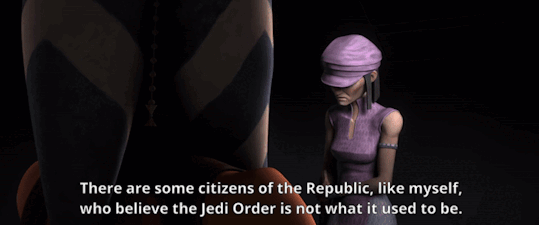
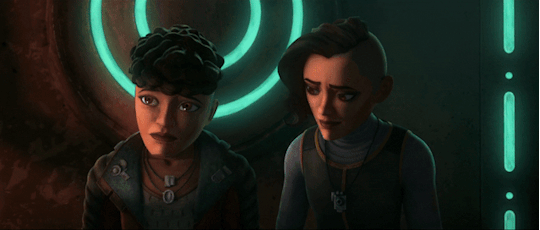
It makes sense that these characters would see the Jedi as 'the elite'. But they don't have the full picture.
We, as the audience, do.
So we know that the reality is more along the lines of the Jedi "should do more but can't".
After all, we are made privy many instances of the Jedi speaking up and trying to change politicians' minds, only to be dismissed and overruled at every turn.
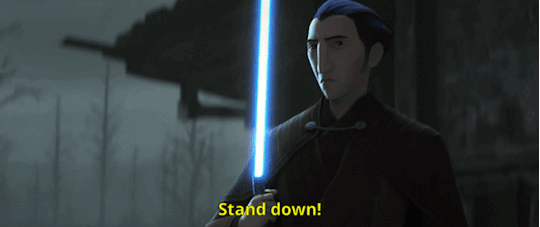
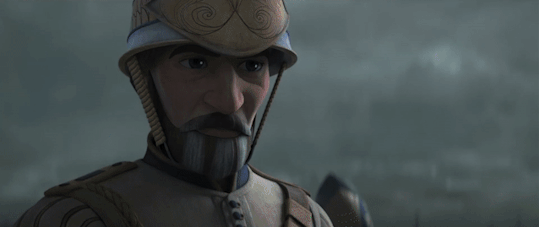




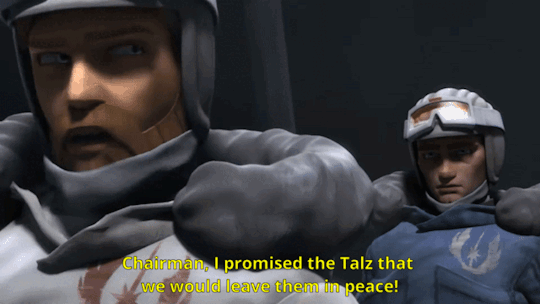
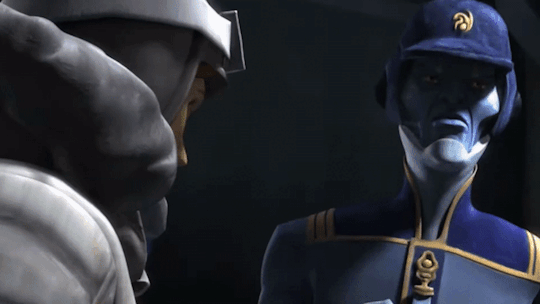

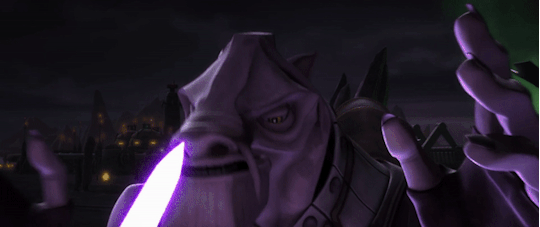
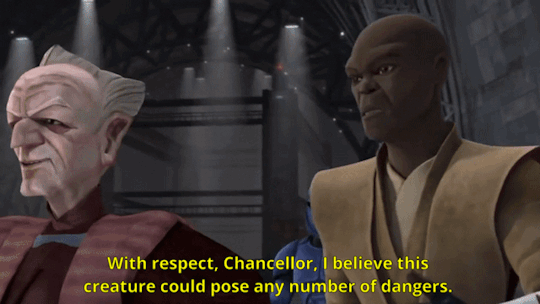
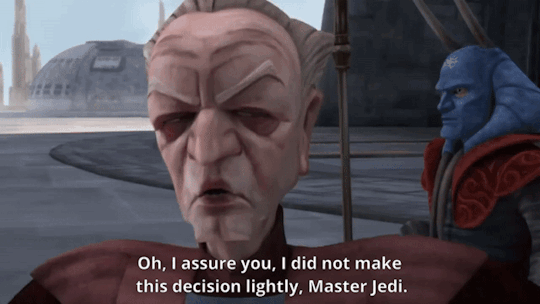


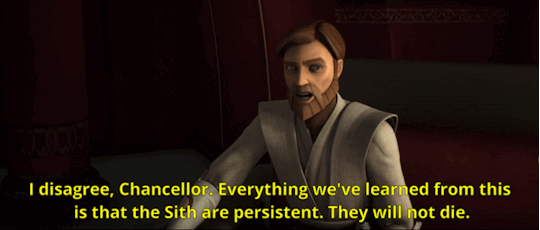

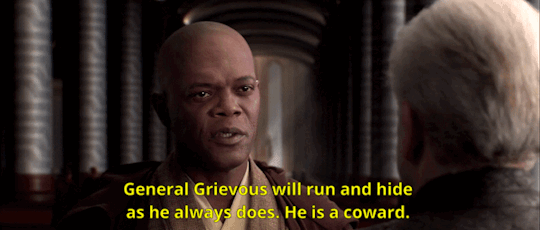
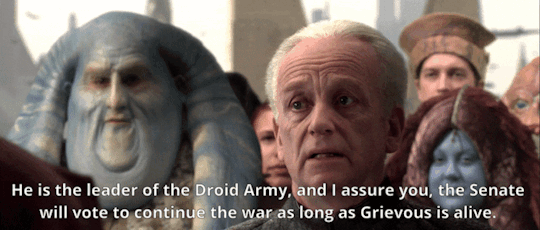
↑ these aren't even all the times we see it happen, btw, there's more examples...
So at some point, if you - as an audience member - see all this and are still saying "the Jedi should've done more!" I really need to know... what more could they have done?
Take control of the Senate?

That'll result in a dictatorship, there's a reason they waited as much as they did before trying to take down Palpatine.
Power corrupts and they're wise enough to know it.
Don't join the Republic in the first place?
George Lucas never frames the Jedi's involvement with the Republic as a bad thing. In the foreword to Shatterpoint (2004), he says their being part of the Republic led to 1,000 years of prosperity.
Where's the issue, then? Well, it's a two-man job and the Jedi's bosses, the Senate, grew corrupt and stopped doing their part. They stopped carrying their end of the couch.
But “no Jedi in the Republic from the get-go” means the Sith will rise to power even faster. Fun!
Stay neutral in the war?
The Separatists were killing civilians and testing weapons on neutral systems, or enslaving them.


The choice put before the Jedi was "do what we tell you and fight, or let people die".
But also, out-of-universe... do you really think Palpatine, genius politician, master of spin, can't re-frame the Jedi staying neutral in a negative light?
When they joined the war, he unleashed propaganda that either directly (on the Separatist side) or indirectly (on the Republic side) framed them as "warmongers who corrupted their values". If they don't join, they're "apathetic cowards who care more about their own values than the lives of the people they're supposed to protect".
So either way, Order 66 comes around, wipes them out and the Republic goes "good riddance".

So what else could they do?
The answer is "not much".
Because the whole point of the narrative is that Palpatine checkmated them by taking the fight to a field the Jedi had no experience in or right to meddle with: politics.
So if you look at these characters who are nowhere near the top of the food chain, and say "well, why didn't they fix things?" I'm sorry to say you're missing the point of the narrative.
Or maybe you do get the point of the narrative and just aren't trying to be fair...

... in which case, at least be consistent and also argue:
"Why didn't Threepio & Artoo do more to save the Rebel crew of the Tantive IV from the stormtrooopers?!"
"Why didn't Matashichi & Tahei do more to save the Akizuki clan?!"
#HINT: the answer to both those rhetorical questions is “there was nothing they could do”#Also while we're on 'Hidden Fortress' - it's also worth pointing out that Qui-Gon and Padmé's dynamic on Tatooine in TPM#is very similar to the dynamic of General Rokurota and Princess Yuki in 'Hidden Fortress'.#The older warrior looking after the royalty teenage girl who is dressed as a peasant so as to not draw attention because she's on the run.#The Hidden Fortress#Akira Kurosawa#George Lucas#Artoo#Threepio#c3po#r2d2#lucas quotes#meta#on the jedi's involvement in the clone wars#in defense of the jedi#jedi order#qui-gon jinn#the phantom menace#star wars#long post
816 notes
·
View notes
Text
"the Warrior, the Princess & the Peasants"
Hidden Fortress (1958)
The Akira Kurosawa movie that inspired the structure and some of the character dynamics in the first Star Wars film. The main characters are:
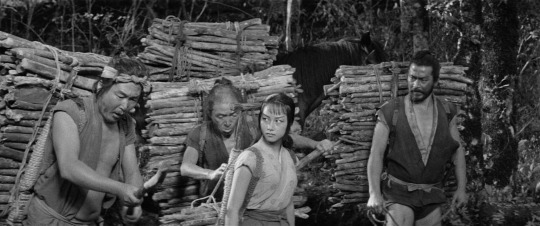
Matashichi and Tohei, the two serfs whose eyes most of the picture is viewed through, Princess Yuki, an uppity young aristocrat on the run from the authorities, who constantly bickers with Toshiro Mifune's battle-hardened general Rokurota.

Star Wars (1973)
In the original concept of Star Wars, the dynamic stayed similar, although more characters were added to the mix.
But you still have the two droids, C-3PO and R2D2 (deriving from the peasants in Hidden Fortress), Princess Leia (loudmouth aristocrat on the run from the authorities), and Luke Skywalker (a battle-hardened general).
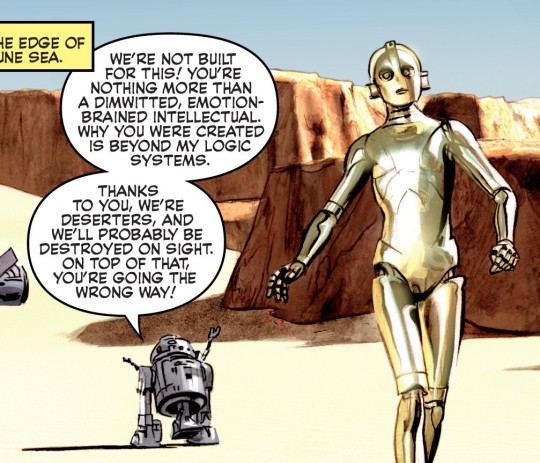
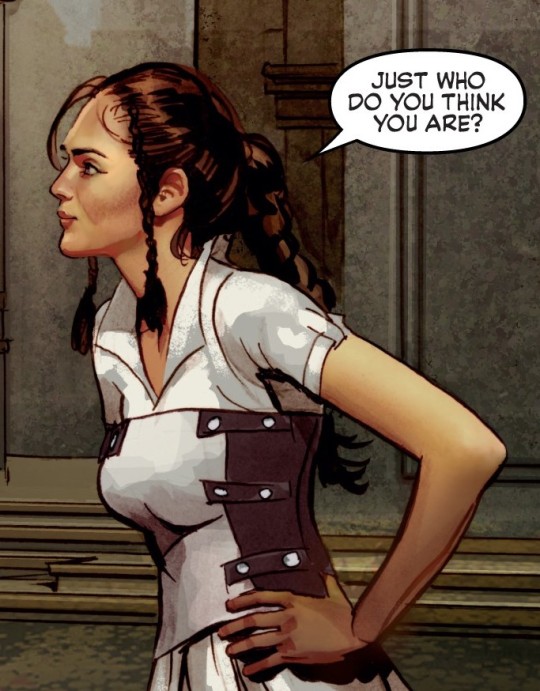
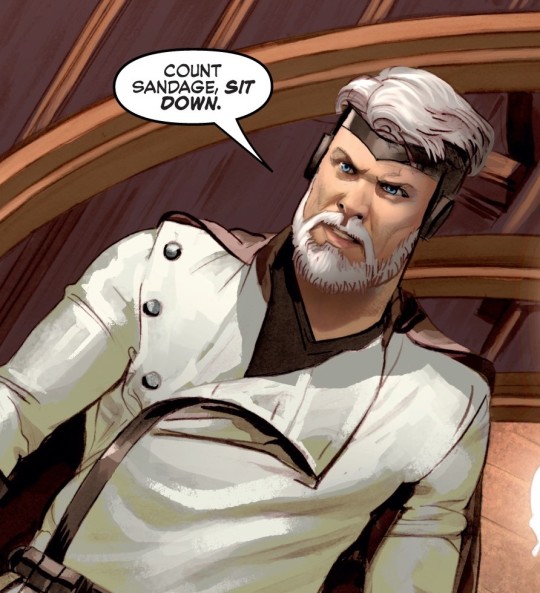
As drafts changed and plot details shifted, Luke Skywalker became the young protagonist, the general character became Obi-Wan Kenobi (whom Toshiro Mifune was originally considered for).
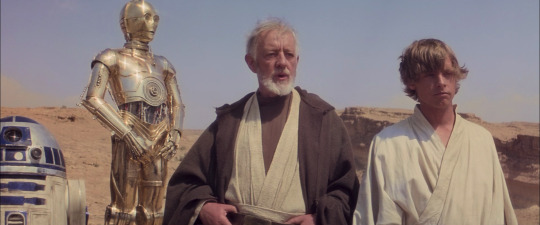
It's not a one-to-one copy, but there is clearly an inspiration. And when you look at the posters at the time?
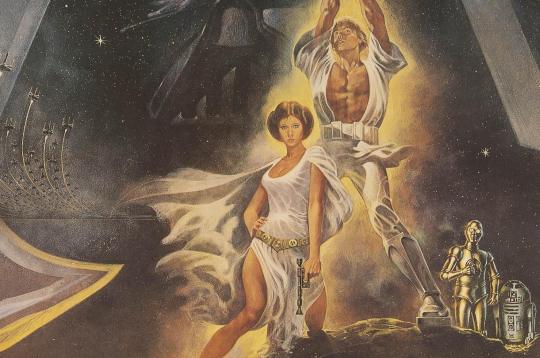
Still Luke, Leia, 3PO and R2.

The Phantom Menace (1999)
As already discussed here, in one of the early drafts of The Phantom Menace, Obi-Wan is the one who rescues the Queen from Naboo and finds Anakin on Tatooine. Qui-Gon only comes into the script once the gang gets to Coruscant.
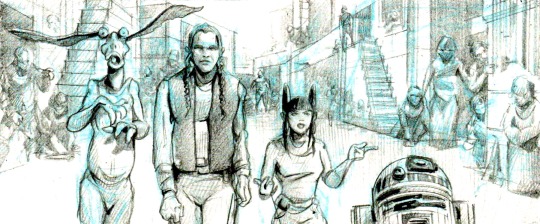
But in this early draft, Obi-Wan is an experienced warrior, who pushes the envelope, eliciting the complaints of princess Queen Amidala (the aristocrat on the run). When on Tatooine, the two "low-ranking" characters are still R2, this time with Jar Jar Binks.
Eventually, for multiple reasons, Obi-Wan was made the Padawan and Qui-Gon was put in early in the script.
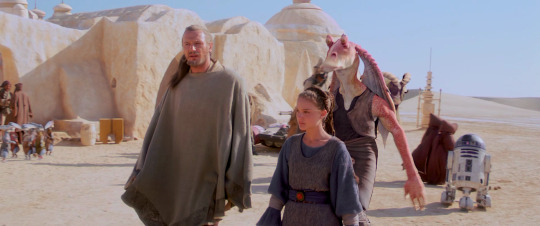
(Fun Fact: before this change was made, there was a draft where Obi-Wan stayed the elder, Qui-Gon was made the Padawan, and then Obi-Wan gets killed by Maul and young Qui-Gon takes on his name, going on to become Alec Guinness' Ben!)
But be it Qui-Gon or Obi-Wan, the warrior in The Phantom Menace is no longer a general with rank authority, he's just a diplomat.
The only reason he's able to do things "his way or the highway" is because 1) he is headstrong and 2) Padmé is undercover and doesn't wanna give it away (as if Qui-Gon and Obi-Wan hadn't already noticed...!)
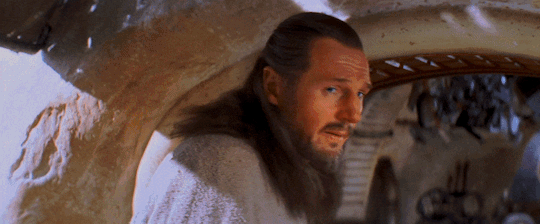
So here we have an interesting reversal of roles: in Hidden Fortress (and kinda in the first Star Wars film), the Princess is the chaotic hellion who must be reined in by the warrior, who's always screaming:
"Princess, ffs! Stop wandering off, they're actively looking for you!"
Here, the warrior is the one going off-book and the Queen is like:
"Stop this at once, you cheeky fellow! We're on the run!"
Finally, as covered in this lengthy post about how The Hidden Fortress informs us of the Jedi's standing within the Republic, Lucas makes it clear that he alternates between projecting the "peasant POV" archetype on the Jedi duo and Jar Jar & R2/Anakin.
There is no clear protagonist in The Phantom Menace, you just have four main characters: the Jedi (who are two separate characters, but functionally are basically one single character), Padmé and Anakin.

All of this to say that just like the themes, these archetypes also echo each other in more ways than one, and it's intentional. As Lucas puts it, it's like a symphony:
"I’m also doing very stylistic ideas, things that are very musical in terms of how I develop themes, and repeat themes. I go do the same thing over and over in certain areas to echo what I have done before. It’s like a symphony more than a movie."
- Star Wars Insider #35, 1997
"I'm approaching these films, for better or worse, like a symphony. I have a lot of themes that I keep repeating over and over again through the whole thing. Different notes and different instrumentation, but when you see all six movies together you'll see that there's a lot of recurring notes being played. [...] And it’s done on purpose. And it’s also done in different facets."
- Star Wars Insider #52, 2000
So yeah.
Just some fun similarities and tidbits I noticed, figured I'd share.
#the hidden fortress#akizuki clan#Princess Yuki#Princess Leia#Queen Amidala#Rokurota#Luke Skywalker#Qui-Gon Jinn#Obi-Wan Kenobi#star wars#akira kurosawa#George Lucas#bts tidbits
115 notes
·
View notes